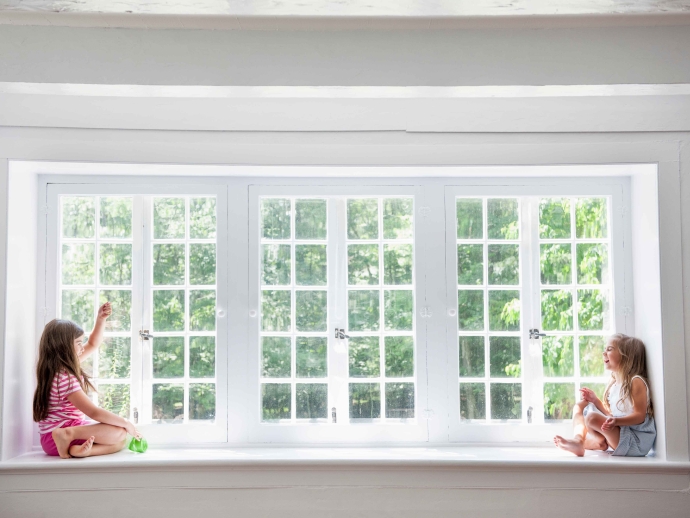Understanding Window Energy Ratings: A Texas Homeowner's Guide to NFRC Labels

As a Texas homeowner, understanding window energy ratings is crucial for making informed decisions about your home’s energy efficiency. With the hot and often humid climate of Texas, choosing the right windows can significantly impact your comfort and energy bills. The National Fenestration Rating Council (NFRC) provides standardized labels that help consumers assess the energy performance of windows. This guide will explain what these ratings mean, how they can benefit you, and what to look for when selecting windows for your home.
What Are Window Energy Ratings?
Window energy ratings are numerical values assigned to windows based on their thermal performance. These ratings are designed to help homeowners understand how well a window will insulate their home, how much solar heat it allows in, and how much air can leak through it. The NFRC label includes several key metrics that provide a comprehensive view of a window's energy efficiency.
Key Metrics on NFRC Labels
-
U-Factor: The U-factor measures the rate of heat transfer through the window. It indicates how well the window insulates your home; the lower the U-factor, the better the insulation. In Texas, where cooling is a priority, look for windows with a U-factor below 0.30 to ensure efficient heat retention during the cooler months.
-
Solar Heat Gain Coefficient (SHGC): SHGC measures how much solar radiation passes through the window. This value ranges from 0 to 1, with lower values indicating better performance in blocking unwanted heat from the sun. For Texas homeowners, a SHGC between 0.25 and 0.40 is ideal, as it allows for some passive solar heating in winter while reducing heat gain in summer.
-
Visible Transmittance (VT): VT measures how much visible light is transmitted through the window. A higher VT means more natural light enters your home, which can reduce the need for artificial lighting during the day. In bright Texas summers, balancing light and heat gain is essential; therefore, a VT rating of around 0.50 to 0.70 is often desirable.
-
Air Leakage (AL): Air leakage measures how much air escapes through the window frame and seals under specific pressure conditions. A lower AL rating indicates better performance in preventing drafts and maintaining indoor temperatures. Look for windows with an AL rating of 0.3 or lower for optimal energy efficiency.
Why Energy Ratings Matter
Understanding these ratings is vital for several reasons:
-
Energy Savings: Energy-efficient windows can significantly reduce heating and cooling costs by minimizing heat loss in winter and heat gain in summer.
-
Comfort: Properly rated windows help maintain consistent indoor temperatures, enhancing overall comfort in your home.
-
Environmental Impact: Using energy-efficient windows contributes to reduced energy consumption, which is beneficial for the environment by lowering greenhouse gas emissions.
Selecting Windows Based on NFRC Ratings
When choosing new windows for your Texas home, consider these factors:
-
Climate Considerations: Texas experiences diverse climates ranging from humid coastal areas to dry deserts. Understanding your local climate will help you select windows with appropriate U-factor and SHGC ratings.
-
Orientation: The direction your windows face can influence their performance. South-facing windows can benefit from higher SHGC ratings to capture winter sun, while east and west-facing windows may require lower SHGC ratings to minimize summer heat gain.
-
Window Type: Different types of windows (e.g., double-hung, casement, sliding) may have varying energy performance characteristics based on their design and materials used.
-
Glazing Options: Consider whether you want single, double, or triple glazing. Double or triple-glazed windows provide better insulation but may be more expensive upfront.
Benefits of Energy-Efficient Windows
Investing in energy-efficient windows offers numerous advantages:
-
Lower Energy Bills: By reducing heat loss and gain, energy-efficient windows can lead to substantial savings on your monthly utility bills.
-
Increased Home Value: Energy-efficient upgrades are attractive to potential buyers and can increase your home's resale value.
-
Improved Indoor Comfort: With better insulation and reduced drafts, you’ll enjoy a more comfortable living environment year-round.
-
Noise Reduction: Many energy-efficient windows also provide sound insulation benefits, making your home quieter.
Common Misconceptions About Window Ratings
Despite their importance, several misconceptions about window ratings persist:
-
All Windows Are Created Equal: Not all windows perform similarly; always check NFRC labels to compare energy performance.
-
Higher Cost Equals Better Quality: While higher-priced windows may offer better performance features, it’s essential to look at their specific ratings rather than just price.
-
Energy-Efficient Windows Are Only for Cold Climates: In hot climates like Texas, energy-efficient windows are just as critical for keeping homes cool during sweltering summers.
Conclusion
Understanding window energy ratings is essential for Texas homeowners looking to improve their home's comfort and efficiency. By familiarizing yourself with NFRC labels—particularly U-factor, SHGC, VT, and AL—you can make informed decisions that align with your specific needs and local climate conditions.
Investing in high-quality, energy-efficient windows not only enhances your home's aesthetic appeal but also contributes to significant long-term savings on energy bills while promoting environmental sustainability. When selecting new windows, always consult with professionals who can guide you through the options available based on your unique requirements.
By prioritizing energy efficiency in your window selection process, you’ll create a more comfortable living space that stands up to Texas’s challenging climate while reaping the benefits of lower energy costs and increased property value.

